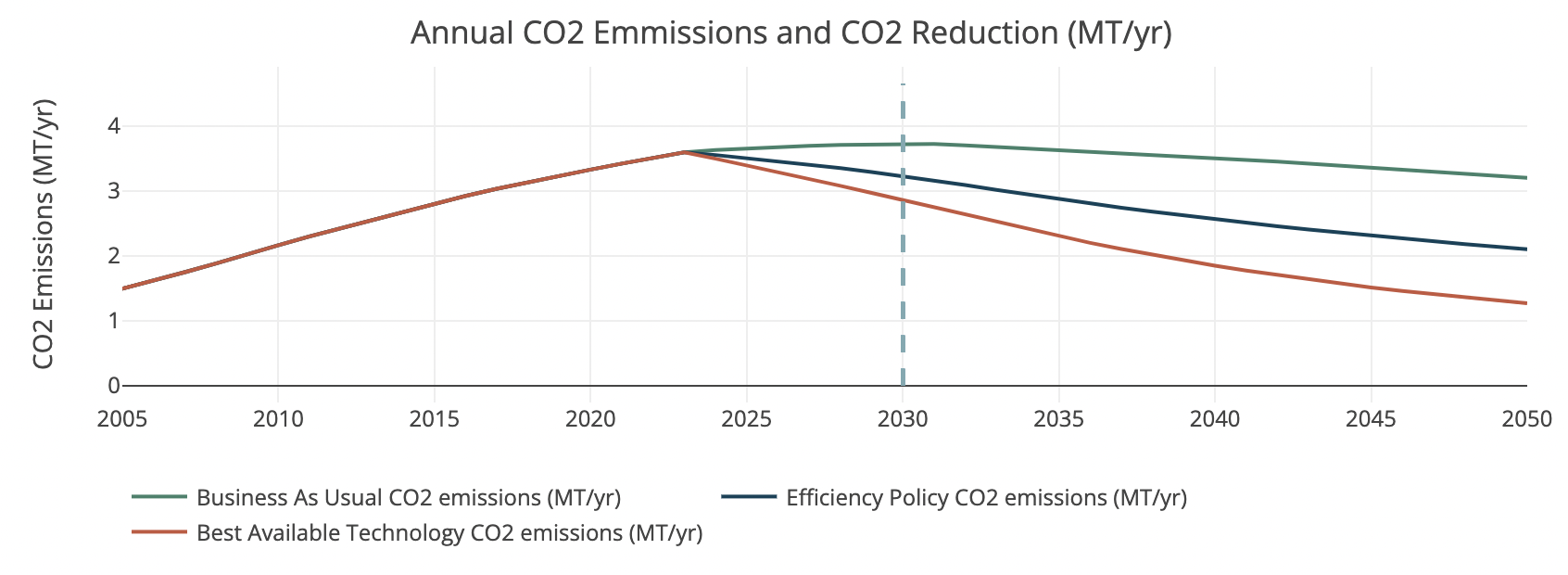Forecast Climate Impacts up to 2050 with Mepsy
Mepsy, CLASP’s climate impact calculator, now allows users to forecast climate impacts into 2050.
As the target date for critical 2030 climate mitigation goals looms just eight years away, policymakers and researchers need the tools to accurately forecast climate impacts into the next several decades. Many countries have set additional goals for years after 2030, often using 2050 as the goalpost. To match the expanding needs of our users, Mepsy, CLASP’s Appliance & Equipment Climate Impact Calculator, is evolving to include more relevant data and improve the user experience.
In mid-May, CLASP unveiled the new 2050 extension model for Mepsy. This update allows users to forecast climate impacts for all seven of Mepsy’s current appliances up until the year 2050. Mepsy contains the most of-the-moment data to provide efficiency professionals with the insights needed to inform the highest impact policies for people and the planet.
In addition to longer modeling capabilities, this month’s update also includes backend revisions and newly released methodologies to dive deeper into the data.

Operation Updates:
In anticipation of this important update, Mepsy’s team fine-tuned the tool’s code for an improved user experience. We also integrated additional options that allow users to account for improvements related to pricing, efficiency and emissions over time, more closely resembling real-world conditions.
Methodology Updates:
The Mepsy team used data from updated versions of previously cited sources, like USAID, the World Bank and the UN. To address gaps in data, CLASP used linear interpolation and extrapolation to complete the set. The current modeling is based on a beta regression model, improving the accuracy of the original model built in 2007.
For a more detailed description of our methodology, please see our Extension Model Methodology, also available on the Mepsy page.
Looking Forward: Noting high-GWP refrigerants
The majority of refrigerants used today have high GWP when released into the atmosphere, especially during leakage. Because of their ubiquity in AC and refrigeration (residential and commercial), CLASP calculated the outsized climate effects of refrigerant leakage, which we will later integrate into existing Mepsy appliances. We hope these data further support the implementation of policies that prioritize high-efficiency AC and refrigeration appliances.

These emissions are 13 to 29% of the CO₂ emitted while powering seven common appliances in the 22 countries.
In anticipation of the launch, we are releasing our refrigerant methodology that explains how the data were gathered and will be integrated into existing cooling and cooling/heating appliances on Mepsy.
To keep up to date with Mepsy, reach out to mepsy@clasp.ngo to sign up for email updates.









